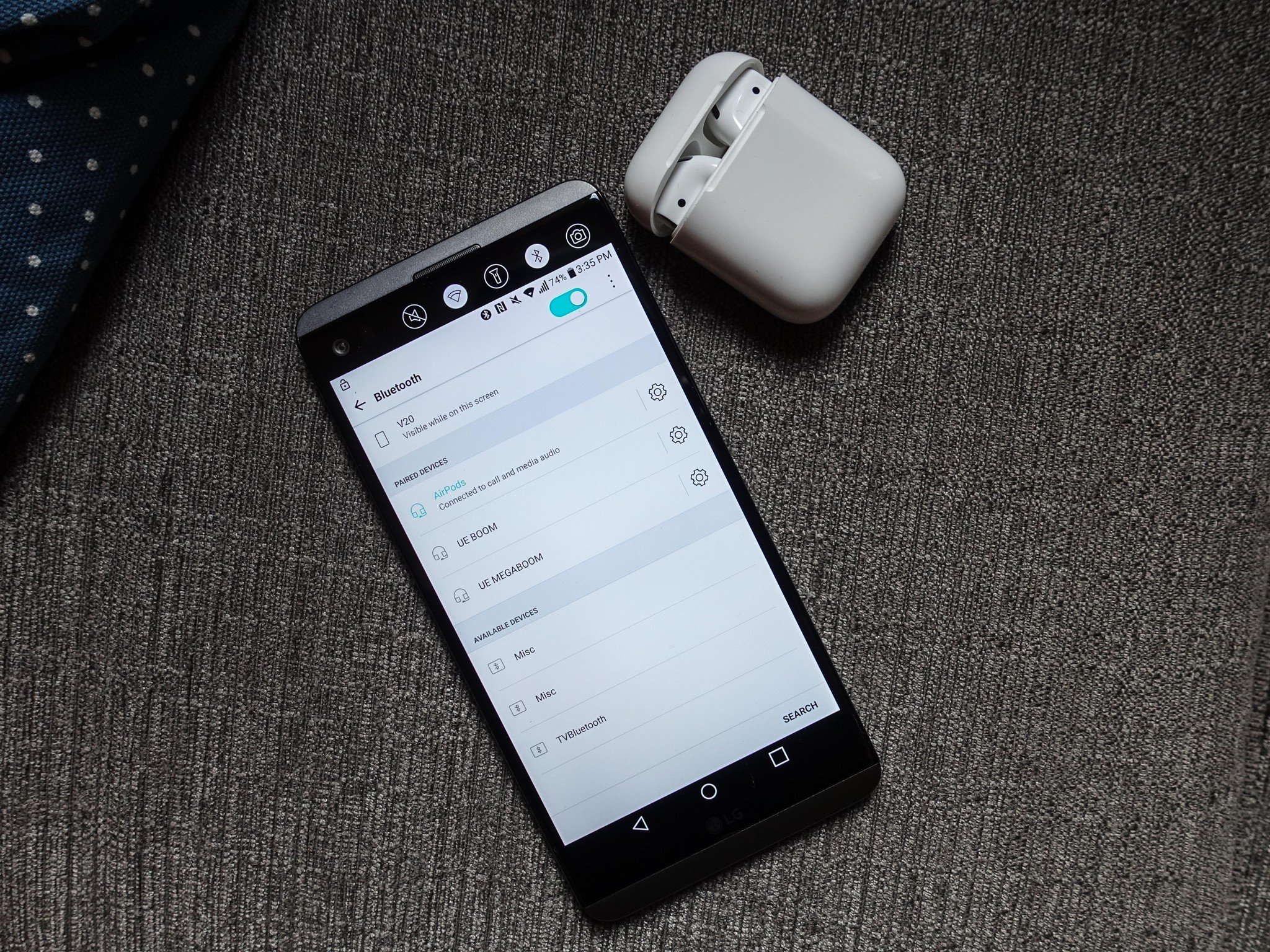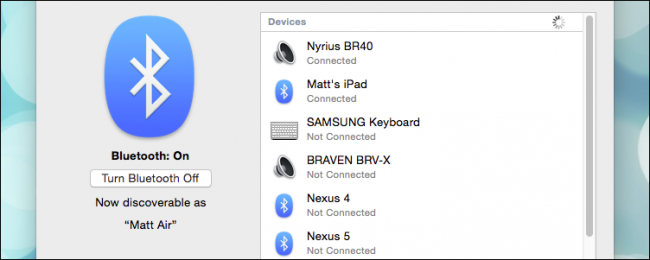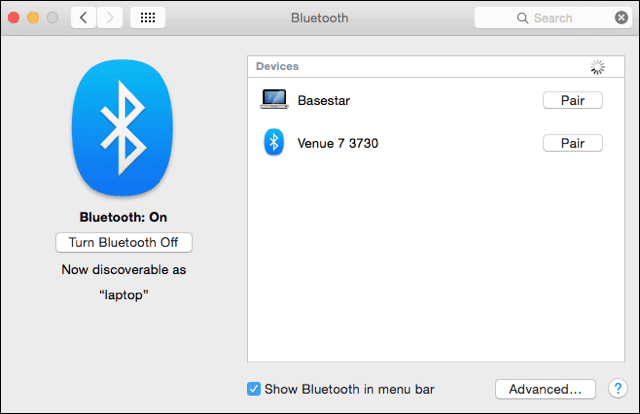Leather Sleeve for 13-inch MacBook Air and MacBook Pro - Saddle Brown. $179.00 Available colors: Pro Display XDR - Standard glass. $4,999.00 LG UltraFine 5K Display. $1,299.95 61W USB-C Power Adapter. $69.00 USB-C to USB Adapter. $19.00 Mice & Keyboards. Retina Display Four million pixels. One immersive experience. With a resolution of 2560-by-1600 for. Connect your Mac with a Bluetooth keyboard, mouse, trackpad, headset, or other audio device. Make sure the device is turned on and discoverable (see the device’s manual for details). On your Mac, choose Apple menu System Preferences, then click Bluetooth.
To mirror a Mac to other smart TVs without Apple TV, you will need to get a mirroring app designed to work with that TV brand. For Samsung TVs, get the Samsung SmartThing app from the App Store. How to connect a Bluetooth device to your Mac. Whether it’s a Bluetooth mouse, keyboard, trackpad, speakers or headphones, pairing a Bluetooth device with your Mac should be easy.
Bluetooth has become an important part of our lives. However, it is a reliable technology. It is rare but sometimes you may have Bluetooth problems. Several Mac users have reported that they occasionally encounter a random loss of Bluetooth functionality. Users further have said that the Bluetooth menu displays a “Bluetooth: Not Available” error (see image below). You may run into problems by establishing a Bluetooth connection or using a Bluetooth accessory. And this will cause your Bluetooth devices and accessories to stop working. And furthermore, several macOS and iOS services (AirDrop, Handoff, Continuity, Universal Clipboard, etc) will not work properly if you are having issues with Bluetooth.
Bluetooth technology lets you wirelessly connect various hardware (keyboard, mouse, trackpad, headset, etc) to your Mac by associating them with your computer (also called pairing). Once paired, your Mac connects to these tools if Bluetooth is working.
This article explains what you can do to troubleshoot when Bluetooth is not working.
Here is what you can do when Bluetooth is not working
Bluetooth settings can be accessed by going to System Preferences > Bluetooth
See also: How to fix macOS Catalina Bluetooth problems
Please try each step until your issue is resolved. After each step, check to see if Bluetooth is working.
Please also note that performing some of the methods below will cause you to temporarily lose connection to your connected devices (e.g., keyboard, mouse, etc). So you may want to use a wired device.
See also: Unable to turn on Bluetooth
If you do now see the Bluetooth icon in the menu bar, go to System Preferences > Bluetooth and check the “Show Bluetooth in menu bar”.
- You may think that Bluetooth seems to be not working because your Bluetooth device stopped working. It is simply that your device battery is running very low if it uses battery. Make sure that your Bluetooth accessories has enough battery life. You may want to change the batteries or charge the device.
- Make sure that the Bluetooth device is turned on.
- Make sure that your Bluetooth device and Mac are close to each other.
- Ensure that your Mac is up to date.
- Restart your Mac. Simply restarting your Mac may fix your problem. You can restart your Mac by selecting Restart from the Apple menu.
- Disable and enable Bluetooth. Disable Bluetooth and wait several seconds and then turn it on. You can do so by clicking the Bluetooth icon in the menu bar. As stated above, If you cannot see the Bluetooth icon, then go to System Preferences, click Bluetooth, then select “Show Bluetooth in the menu bar.”
- Remove all USB devices (mouse, keyboard, etc) and then reboot your Mac and then reconnect them.
- Remove current Bluetooth preferences then reboot your Mac. Here is how:
- Close any app that is trying to use Bluetooth device with your Mac
- In Finder, press the Command+Shift+G keys together. This will reveal the “Go to the folder:” window, then enter the following and hit go.
- /Library/Preferences/ (not ~/Library/Preferences/)
- Try the find the “com.apple.Bluetooth.plist” and “com.apple.Bluetooth.plist.lockfile” files. And delete these files. These files could be corrupted and cause problems. You may be asked for an admin password. (if you want, copy these files to somewhere else as a backup before removing).
- Restart your Mac.
- Reset your Mac’s SMC. This is done differently depending on the Mac models. Apple’s documentation explains how this is done.
- Reset your Mac’s Bluetooth module. Here is how:
- Press and hold the Shift + Option (Alt) keys
- While holding these keys, in the menu bar, click the Bluetooth icon
- Click Debug
- Click Reset the Bluetooth module (see the image below)
- Then reboot your Mac.
- Restart your Mac in Safe Mode. Safe Mode may fix your problem. To boot your Mac in Safe Mode, follow the steps below:
- Turn off your Mac.
- Turn on your Mac and immediately press and hold the Shift key.
- Release the Shift key when you see the login screen.
- Login.
- Your Mac is now in Safe Mode. If you are not sure if your Mac is in Safe Mode, see this article. Test your Bluetooth now. Is it working?
- In either case (working or not), restart your Mac normally. Doing so will exit Safe Mode. Meaning restart your Mac, but do not press and hold any key.
- When your Mac is turned on, test Bluetooth again. Is it working now?
If none of the methods above work, you may want to contact Apple support. You may also want to make a Genius Bar reservation.
See also: iPhone Not Connecting To a Car Stereo Using Bluetooth
Simplify Bluetooth connection
From the dawn of time to just about a few years ago, all of us sported a pair of wired headphones and were convinced that this is simply how it will be done forever. After all, they are the easiest technology around: just plug them in, put them on, and go. But with proliferation of Bluetooth headphone options and disappearance of headphone jacks from nearly all the latest smartphones, wired headphones seem to progress on the path of disappearance more and more each day.
Thankfully, wireless devices are great. They are lightweight. They are versatile. They can be easily connected to your iPhone, your Mac, or your car. Charge them overnight just the same way as your phone and they last all day too.
Sadly, without proper configuration, connecting Bluetooth headphones to Mac might get a bit tricky, with frequent disconnections and music interruptions. Here, we’ll help you find out how to pair AirPods and other sound devices with Mac properly and control them masterfully at the same time.
Why Bluetooth Headphones Won't Connect To Mac
There are a few common problems we need to explore:
- Bluetooth headphones won't connect to Mac right out of the box — some configuring is needed
- Pairing Bluetooth headphones with Mac is different from pairing them with iPhone or your car’s audio system
- Special settings that answer questions like how to connect two Bluetooth headphones to one Mac and how to use multiple audio outputs
Throughout the article, AirPods would be used as an example, but any other model of Bluetooth headphones can be connected in a similar fashion.
Get a tool to pair with a Mac
Connect Bluetooth devices to your Mac in one click. Setapp has an easy tool for that.
How to pair wireless headphones to Mac
Connecting Bluetooth headphones to Mac for the first time is done by following a few easy steps:
- On your Mac, click on the Apple menu and launch System Preferences
- Navigate to the Bluetooth menu and Turn Bluetooth On. You should now see all available Bluetooth devices around you.
- Make sure your headphones are charged and currently in discoverable mode. Click Connect to establish a new connection
- Your Bluetooth headphones should now appear in the list. Click Connect to establish a new connection.
- If you’re trying to reconnect your existing device, right-click on it and choose Connect
After you’ve managed to successfully connect Bluetooth headphones to Mac for the first time, they should stay connected or reconnect automatically when you leave the Bluetooth range (around 33 feet or 10 meters) and come back.
You can also calibrate headphones to your liking through the Sound menu in System Preferences. For example, in the Output tab you can choose to “Show volume in menu bar” and set a stereo balance between right and left.
Described above is the ideal scenario for connecting AirPods to Mac. But oftentimes things don’t go as planned, so let’s work through some widespread issues regarding Bluetooth headphones as well.
How to connect AirPods to Mac
There’s good news for those interested specifically in how to pair AirPods with MacBook. It’s really handy to set up connections if you use multiple Apple devices with your AirPods. Plus, you can get third-party software to automate the flow.

Here’s how you connect new AirPods to Mac:
- Open System Preferences on your Mac and select Bluetooth.
- Ensure Bluetooth is turned on.
- On AirPods, press and hold the round button (it’s at the bottom center of the case) until the white light starts blinking.
- Your Bluetooth headphones should now appear in the list.

Bluetooth For Macbook Air
In case you’ve already paired AirPods with your iPhone that’s tied to the same iCloud account and Apple ID, your earbuds will be automatically recognized by Mac.
To simplify it even more, install ToothFairy, an app that pairs Bluetooth devices with Mac in one click. It works particularly well with connecting AirPods to Mac – instead of taking AirPods out of their case and putting them back in, you click on one single icon in ToothFairy. You can read more about how to use the app below.
How to fix Bluetooth headphone issues
Sometimes going through the setup steps doesn’t result in your headphones connecting successfully, or connecting and then abruptly disconnecting. This is profoundly annoying but can be solved by either resetting the headphones or purging preference settings on your Mac. Here's how to fix all known issues:
Restart your Bluetooth headphones
In case you can’t connect your Bluetooth headphones not only to your Mac but also any other device you own (iPhone or car audio), it might be a glitch in its settings, so a simple reset should remedy the situation.
For reset instructions, check your device’s manual. Here’s how to reset AirPods:
- Put the earpieces into the case and keep the lid open
- Press and hold the setup button until the light switches from amber to white (around 10 seconds)
Now all settings on your earphones should be reset and you should be able to connect them again using the standard workflow above. If the problem persists, it could be something to do with the preferences on your Mac.
Reset sounds preferences on Mac
First, make sure that your Mac is running macOS Sierra or newer (macOS High Sierra or Mojave). If not, upgrade to the latest version by going to System Preferences > Software Update or using the App Store if you’re upgrading from a few versions back.
Next, if nothing was of any benefit so far, try resetting your Mac’s sound preferences. To do that:
- From the menu bar select Go > Go to Folder… and type ~/Library/Preferences
- In the long list of preference files, find and delete the following: com.apple.preferences.plist and com.apple.soundpref.plist
Deleting preferences out of the library forces your Mac to recreate them brand new, thus avoiding any bugs or improper algorithms that could have interfered with your Bluetooth headphones setup. If that didn’t work, you can also try relaunching the audio process:
- Launch Activity Monitor from the Applications folder
- In the CPU tab, find the process called coreaudiod
- Quit the process and close Activity Monitor
The above would force not only the preferences for your audio to reset but also the audio process for your whole Mac to relaunch.
Download Bluetooth For Mac
No audio from a paired and connected Bluetooth headset
Occasionally, when you succeeded in connecting Bluetooth headphones to Mac, you might hear no sound going through. There are a few things you can do to solve this.
Ensure that your headphones are the selected audio output for your Mac:
- Go System Preferences > Sound
- In the Output tab, find your headphones in the list and double-click to make them active
If that didn’t change anything:
- Reset your headphones as per the directions above
- Go System Preferences > Bluetooth
- Right-click on your headphones, choose Remove, and confirm
Now you need to connect Bluetooth headphones to Mac all over again, and the problem should disappear.
Can’t connect two Bluetooth headphones Mac recognizes
The beauty of Mac’s Bluetooth menu is that it lets you add any number of Bluetooth-enabled devices, from keyboards to headphones. Sometimes, however, it might malfunction and not allow you to add two wireless headphones at the same time.
To fix this issue, essentially repeat the steps from the previous section:
- Reset each pair of headphones
- Remove them from Mac’s Bluetooth menu
- Reconnect your headphones once more
If, however, you’re looking for how to use multiple audio outputs, such as headphones, at the same time — here some magic tricks are required.
How to use multiple audio outputs simultaneously
Most Mac users believe that they can only play their audio output through one device at a time, be it internal speakers, Bluetooth headphones, or some other amplifier. But in reality it’s possible to play audio on multiple devices at the same time through a handy built-in utility called Audio MIDI Setup. Here’s what you need to do:
- Launch Audio MIDI Setup through Applications
- Click the plus icon at the bottom left and choose Create Multi-Output Device
- In the new option that appears, check all the Bluetooth devices you need to play simultaneously
- Navigate to the Sound menu in System Preferences and choose the Multi-Output Device in the Output tab. Now all sounds will play through both devices at the same time.
Playing audio through multiple devices is a nifty trick for when you need more sound power for your party or when trying to create a true surround sound for a movie screening.
Use master audio software for all needs
Most of the time, audio on Mac is not an issue. What’s frustrating is the way current settings are sprinkled all over macOS. Lots of fixes described here might seem confusing and unintuitive at first sight. You might wish there was an app that would make it easy to control all your audio needs from a single place. And there is.
Meet ToothFairy — the most simple and magical Bluetooth device assistant for Mac. In a true one-click fashion, ToothFairy allows you to set up any number of Bluetooth-enabled devices, configure hotkeys, and switch easily between them.
To set up a new device in ToothFairy, all you need to do is:
- Open the app
- Click the plus icon
- Locate your device in the list and click Connect
Similarly, it’s just as easy to assign custom icons to all your frequently used devices and get them displayed in the menu bar, so you instantly know which devices are connected, what’s their battery life, and can quickly turn them on and off with one click.
Additionally, ToothFairy offers a unique option of improving the sound quality of your Bluetooth headphones by funneling the sound through a higher level audio codec.
In the end, it seems like wireless headphones are here to stay. So finding a master program to control them with ease is going to save your hours of time in the long run. Use the tips above to configure your headphones, easily connect AirPods to MacBook, and take advantage of ToothFairy to just the way you want and take advantage of ToothFairy to tell you what exactly is going on with all your Bluetooth devices.
Best of all, ToothFairy is available for a free trial through Setapp, a platform of over 150 useful utilities and apps for people who love finding the best shortcuts for using their Macs. Now enjoy the sound!

Meantime, prepare for all the awesome things you can do with Setapp.
Read onBluetooth For Mac Not Working
Sign Up
Bluetooth For Mac
